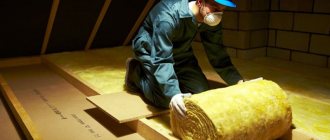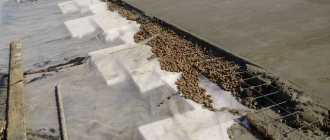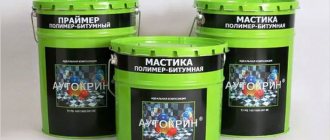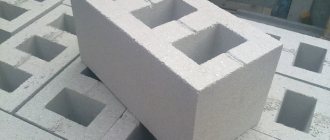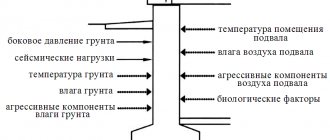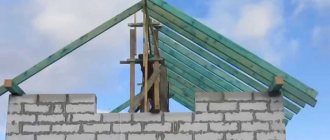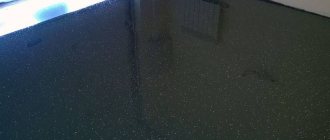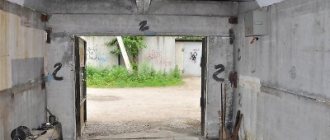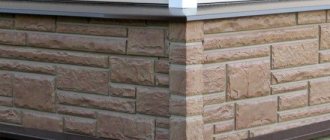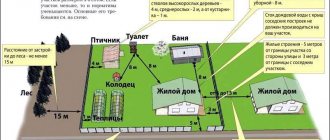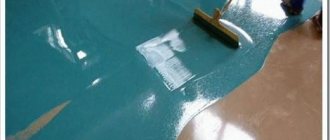Covering a garage roof is very different from roofing a residential home. Here, the first place is usually not aesthetics, but reliability, waterproofing, the ability to withstand significant temperature changes, and ensure safety. For garages, materials such as bitumen mastics, roofing felt, metal, and built-up rubber are usually used.
Hard roofs include slate, metal tiles and corrugated sheets. For soft ones - roofing felt, roofing felt and euroroofing felt.
The application technology is very different depending on what kind of roof the garage has: sloping, single-pitch or gable, flat slab. Therefore, before choosing a roofing material, you need to determine which coating is best suited for the garage roof, and what technology features should be observed.
Car enthusiasts know very well what garage roof leaks are and what they entail. Leaks become a particular concern during the changing seasons, but how can this be avoided? Today, special roofing technologies are recommended for garages, which differ from the roofs of a residential building, which is not surprising, since these buildings are different. Moreover, all work depends not on what to fill the roof with, but on what shape it has.
In the case when the slope of the roof is more than fifteen degrees, it is considered to be sloping, less - flat (often such a roof is made of ordinary slabs). Let's look at the features of covering these two types of roofs, the detailed steps, and how you can fill them correctly and efficiently with your own hands.
Criterias of choice
When deciding how to cover a garage, consider the following features:
- service life of the material declared by the manufacturer;
- price;
degree of reliability;
Criteria for selecting roofing materials
- technological features of installation;
- possibility of self-installation;
- maintainability.
Do not forget that if the building is located next to a residential building or permanent structure, then it must be in harmony with them. In this situation, cover the garage with the same type of material that covers the house. A separate building for transport can be equipped with an inexpensive ceiling.
Types of garage roofing
Before work, you need to decide in advance on the choice of design. The following types of systems are often used:
- Gable type. It is very practical, in particular because it makes it possible to create an attic or storage room in which you can put and store various tools and other things. But this concept is quite flexible, since the size of the attic depends on the discrepancy between the center and the size of the entire garage, as well as the height.
- Attic type. And although installing such a system will cost you a lot, the result will be worth it. Thanks to him, you have the opportunity to complete the construction of a second floor where you can live.
- Single slope type. This type allows you to save a lot of money and effort. To build it you will need a minimum amount of building materials. But, if you want to save money at all, then use regular slate or roofing felt.
- An uneven gable type is also possible for garage flooring.
Breakdown by type
You can close the garage yourself by using the services of specialized stores offering a wide range of products.
Types of materials for garage roof roofing
Let's divide building materials into main types:
- Rolled materials – roofing felt, rubemast, linochrome.
- Profile sheets - galvanized, metal tiles and corrugated sheets.
- Asbestos-cement materials - slate.
- Coatings with bitumen filling – ondulin.
- Concrete plates.
Examples of different roof designs that can be applied to your garage
The choice of an economical, reliable roof is related to the design, the perceived load, the feasibility of insulation and other factors. Let's consider the best way to cover a garage roof for various types of roofing structures.
Single-pitch design
If you built the garage walls yourself, then installing the roof is not a problem. For a pitched roof, roll protection is better suited, the typical representative of which is roofing felt, as well as profiled metal sheets with a profile height of more than 4 centimeters.
Scheme of a pitched garage roof
Ondulin and slate are not used if the angle of inclination of the surface is less than 15 degrees. Increased snow load, fragility at subzero temperatures, compromise integrity.
What to use for the gable option?
This type of roof, with a slope above 15 degrees, allows the use of all roofing materials, with the exception of rolls. They are difficult to fuse due to the increased angle of inclination of the ceiling, and are used only as a waterproofing base. For a gable roof structure use:
- metal tiles;
- asbestos cement slate;
- ondulin;
- profiled sheet.
Drawing of a gable roof structure for a garage
For regions with difficult climatic conditions, it is best to use a more rigid and durable material. In this situation, corrugated sheeting will be the best option. Thanks to longitudinal ribs that create rigidity, it absorbs significant loads and does not accumulate snow cover.
If the room is heated, then the garage roof should be insulated. This will reduce the cost of maintaining the room temperature and will not allow condensation to form, which increases humidity.
What is the best way to cover three- and four-slope roofs?
This option is rare. The materials for the roof of this design can be used the same as for a gable roof. When using metal shingles, do not forget about the increased financial costs caused by large amounts of waste.
What to choose for a mansard roof?
Transport owners appreciated the convenience of the attic, located above the room where they set up a real workshop. The roof is made of a broken structure at angles of 45 degrees or more. The use of heavy coatings - thick sheet metal and slate - creates increased forces acting on the rafters.
An example of a roof using ondulin
- metal tiles;
- ondulin;
- galvanized profiled sheets.
Remember the need for reliable waterproofing and thermal protection of the roof.
Covering with concrete
Concrete roofing is a traditional option for collective buildings, the covering of which is made with reinforced concrete.
Concrete roofing for garage roof
If the surface is not sealed and does not leak, then use an accessible and inexpensive option - roofing felt.
Characteristics
How to cover a garage roof? What to choose to ensure your roof lasts for many years? The answer to these questions is possible after a thorough study of the features, properties, and characteristics of the main types of building materials. Let's look at all the options, and in the future this will help you make the right decision.
Ruberoid
Ruberoid is a rolled roofing material made from cardboard, which is impregnated with low-temperature bitumen. It is reliably protected by an additional layer of high-temperature bitumen and sprinkled with asbestos. Convenient for protecting hard-to-reach areas.
It is advisable to use roofing felt as waterproofing of the floor, and not as the main roof covering
- low strength;
- delamination;
- fire hazard.
Rubemast
Rubemast is a modernized type of roofing material, sprinkled with granite chips and having improved characteristics. It differs from roofing felt by an additional protective polymer layer, which provides increased resistance to moisture, strength and long service life. Rubemast does not burn or melt. Application to the surface is carried out with an open flame.
Linocrom
Linocrom is a roll-type coating. Consists of soft fiberglass, bitumen binder, polyethylene film and coarse granules. Applied to the roof by fusing.
Linocrom is applied to the roof by fusing with a gas torch
Profiled sheet or metal tile
They are modern galvanized cladding sheets with corrugations, allowing you to quickly cover a garage. Main advantages:
- Increased rigidity provided by corrugations.
- High strength.
- Durability.
- Easy to install.
- Wide range of colors.
The disadvantage of corrugated sheeting is the appearance of rust in deformed and damaged areas
It is an airtight coating that does not weigh down the roof structure. Reliably hides surface unevenness.
Slate
Slate is an asbestos-cement covering of wavy and flat type, which has the following advantages:
- increased hardness;
- ability to withstand increased point loads;
- temperature resistance,
- ease of processing;
- long service life;
- high corrosion resistance;
- low water absorption.
Slate dimensions and characteristics
It is an accessible and inexpensive material and does not create noise from precipitation in the room, unlike a metal profile. Disadvantage: large mass, low resistance to sudden temperature changes. When installing the roof, it requires significant physical effort and is easily damaged by rough handling. Slate contains asbestos, which is hazardous to health. Despite the complex of disadvantages, it is better to use slate than to cover the garage roof with untested building materials.
Ondulin
Durable bitumen ondulin is convenient for roofing and has durability. Outwardly it resembles slate, but the composition does not contain asbestos and contains bitumen components, hardeners, cellulose and mineral fillers. It is non-hygroscopic and resistant to mechanical stress.
The disadvantage of onluid is increased fragility at subzero temperatures or plasticity in the heat.
Concrete plates
Concrete floors have high strength and are not susceptible to damage or corrosion. The disadvantage is that they gradually deteriorate from exposure to moisture, are heavy, and installation is carried out using special equipment. Also, concrete slabs need additional protection, which will prevent the appearance of dampness and moisture in the room.
Sloping roof covering
Before covering the sloping garage roof, determine its slope angle; it should not be less than 15 degrees.
This type of roof is usually made with lathing, after which it is covered with wooden boards. So how to cover a sloping garage roof?
When the garage is located next to the house, it is recommended, for aesthetic purposes, to make its roof similar to the roof of a residential building, which will look beautiful and durable. Sufficiently qualified builders will be able to carry out such work.
Simpler options for the best way to cover a sloping garage roof are to cover it:
- Galvanized steel . This method is widely used due to the simplicity of the work and the low cost of the material.
In this case, rafters are installed in increments of up to 120 centimeters. For the sheathing, timber 30x70, 50x50 or 30x100 mm is taken, which depends on the load on the roof.
Advice: It is necessary to take into account that as the angle of inclination of the roof decreases, the pressure of snow on its ceiling increases.
- Profiled sheeting . The material is galvanized steel, stamped with a specific profile. An additional coating with a polymer material is possible, creating another protective layer and improving the appearance of the roof.
The work procedure includes:
- The sheets are cut with metal scissors or a hacksaw; for convenience, a wooden beam is placed. The number of sheets is calculated taking into account their overlap on one cell and 20 centimeters are added in places where they overhang from the edge of the roof. The sheathing is made by analogy with a structure made of galvanized steel.
Tip: You can use a sheathing device to raise the garage roof.
- You need to start laying the roof from the bottom edge. The sheets are laid overlapping along its perimeter and secured with special self-tapping screws.
- They differ from conventional ones in the presence of a neoprene gasket under the washer, which ensures a tight connection. The diameter of the screws is usually taken to be 4.8 millimeters, the length is selected depending on the height of the material cell, but not less than 35 millimeters.
The self-tapping screw at the end has the appearance of a drill, which does not require pre-drilling a hole in the sheet. Installation is carried out using a screwdriver quickly and conveniently.
Tip: Self-tapping screws must be screwed in strictly perpendicularly, avoiding kinks, which could compromise the tightness of the structure.
- The first row of sheets is laid by aligning the edge of the covering along its lower edge. In the outer row of sheets, self-tapping screws are driven into each cell of the profile, in subsequent ones - through one.
- You can purchase the ridge separately, or bend it from a sheet, which can worsen the aesthetics of the structure.
- Side decorative elements for corrugated sheets are also purchased.
When laying slate on a roof, it is laid in the same way as a corrugated sheet, but is attached to a slate nail with a rubber seal to seal the hole. Moreover, the mounting hole is made only in the upper part of the material wave.
Application of roll materials
Ruberoid is popular and used for roofing work. Do you know how to cover a garage roof with roofing felt? Let's consider in detail:
- Prepare the base by cleaning the ceiling from resinous deposits, grease, and dirt. Remove the old coating. If you are laying it on a wooden base, then prepare a frame from edged boards.
- Apply bitumen to the base surface to create a waterproof waterproofing layer. If necessary, apply two coats.
- Lay the roofing material in parallel strips with a 15 cm overlap. Start from the bottom if the roofing material is laid across the slope. Ensure that the lanes are covered to allow water to drain freely. Use bitumen mastic to glue roofing felt. Lay the euroroofing felt by melting the polymer layer with a blowtorch.
- Lay down two layers of covering. Connect the layers together with mastic. Roll the surface with a roller, smooth it, remove air pockets.
We hope that the recommendations will help resolve the issue of how to cover a garage roof with roofing felt. It is not difficult!
Covering a garage roof with roofing felt
When covering a garage roof, roofing felt is most often laid on a sheathing with a three-layer coating applied to it using heated bitumen and hot mastic filler.
The following materials can serve as filler:
- dusty, such as slag dust, gypsum, ground limestone, sawdust, etc.;
- fibrous, for example – asbestos;
- combined in the form of a mixture of dust and fibrous material.
Before applying the mixture to the sheathing, it must be thoroughly cleaned and primed using drying oil and dye. If wooden lathing is used, all possible cracks, pores and crevices should be sealed, and the bitumen must be heated before application.
Important: the primer should first be applied across the wood grain, and then along.
After the primer has dried, the sheathing is covered with mastic and roofing felt is laid on it. The second layer of material is laid, slightly overlapping the edges of the first layer, the third layer similarly overlaps the second.
Along the entire length of the roofing material being laid, it should be overlapped and extended beyond the ridge by approximately 15 centimeters. To avoid the appearance of bubbles and the passage of water, the material should be carefully smoothed when laying.
Laying sheet roofing
Working with sheet material has its own characteristics. Sequence of events:
- Prepare the base by laying vapor and waterproofing. Use roll coatings with anti-condensation characteristics. Using a furniture stapler, lay the film across the surface, ensuring sagging up to 5 centimeters.
- Place square bars with a side of 5 cm on the waterproofing, using self-tapping screws, secure to the rafters.
- Fill the sheathing using boards 15-25 millimeters thick. Provide a sheathing step in such a way as to fix each of the transverse waves of the metal tile. It is important to maintain an interval of 0.5 m for corrugated sheets.
- Fasten the profile sheets to the base with self-tapping screws with an O-ring. Use a screwdriver. Place the screws perpendicular to the surface of the sheet. Screw in without deforming the sheets or pushing through the washer.
- Install wind and cornice strips, install a ridge.
Specifics of installing slate and ondulin
Ensure the roof is airtight by performing work according to the following algorithm:
- Install the sheathing. Use boards with a thickness of 15 mm for ondulin, and 25 mm for asbestos-cement slate. Maintain a lathing interval of 30 centimeters.
- Install waterproofing using an underlayment type of roofing felt. Glue the layers with bitumen.
- Lay the sheets, ensuring an overlap of half a sheet. Distortions are not allowed.
- Use special nails that have a seal for fixation.
- Secure the ridge and secure the cornice below.
You are convinced that the overlap technology is simple. Get everything you need and be patient.
Shed roof with a slight slope
Such a roof is the most economical and simplest option for self-construction of a garage from corrugated sheets; in addition, pitched roofs are used in the construction of garages made of foam blocks or bricks. To cover a roof with a slight slope, either rolled materials such as roofing material or profiled metal sheets with a wave height of at least 40 mm are used.
The use of slate and ondulin on roofs with a low slope is not recommended - in the cold they become fragile and can break under a significant snow load, as well as when trying to clear the roof of snow.
see also
Comments 143
I also think TechnoNIKOL.
A colleague used TechnoNIKOL to cover the roof of his garage. www.tn.ru/
Hello! It’s better to buy armrokrov or something similar, cover the roof and forget about it for 10 years, or maybe more. Tested. You’ll just waste energy and nerves on a 7-year-old roofing material, but it will last for 3 years at most.
Hello! Another question about roofing felt, should you cover it the old way or should you clean it off before the screed and then the reinforcement?
In the massif, the garage was covered with linochrome with fine chips 2 years ago. They fused it directly on top of the old roofing felt. With an overlap of 30 cm on adjacent roofs. Garage 4*10. The roof is pitched, on wooden joists without concrete. We did 2 shabashniks according to proven recommendations. We took 6K without the cost of materials. They also walk on the roofs and litter. The neighbor 2 garages away showed off and covered it with professional metal. It was enough for 4 months. The sheets were first wrinkled and leaked, and then they were simply stolen. Now he rolled it up just like everyone else, using linochrome and is happy with the result.
The best thing is that there is no corrugated sheeting (dense), not that they are making tin foil right now!
As a used option. iron (corrugated sheeting). Sometimes you can grab a freebie. for example, for one garage (24 sq.m.) iron cost 1,200 rubles, for a second garage - 2,400 rubles. Only holes from previous use need to be filled with silicone. This is cheap and cheerful.
corrugated sheet metal and grease on top solves all problems with water and bipeds
Bikrost TKP (T-fabric base made of fiberglass) is an excellent material, price is about 1 thousand per 10 m2
Good night. All they advise is for 2-3 years and then again there are holes and leaks. I advise you to throw the pallets, connecting them with brackets so that all the pallets are like a solid layer, and throw corrugated sheets on top, securing them with screws to the pallet. I did this to myself. If you need photos, write and I’ll send them. Good luck
3 years have passed, no leaks, maybe they did something wrong?
My roof has been repaired and not re-roofed for about 10 years and nothing is leaking either. Many people make false roofs as described above, but I’m not ready to pay 20k rubles +, in one cooperative such a roof flew away after the wind))
3 years have passed, no leaks, maybe they did something wrong?
Don't you have children running around your garage? Of course, this is an option, but my option will be more durable.
Children run around, I chase them all the time.
Good night. All they advise is for 2-3 years and then again there are holes and leaks. I advise you to throw the pallets, connecting them with brackets so that all the pallets are like a solid layer, and throw corrugated sheets on top, securing them with screws to the pallet. I did this to myself. If you need photos, write and I’ll send them. Good luck
The principle understood that pallets are interesting, but corrugated sheets are not my option.
Good night. All they advise is for 2-3 years and then again there are holes and leaks. I advise you to throw the pallets, connecting them with brackets so that all the pallets are like a solid layer, and throw corrugated sheets on top, securing them with screws to the pallet. I did this to myself. If you need photos, write and I’ll send them. Good luck
It all depends on the surface, if it is an ideal screed and everything is covered correctly, then it will easily last 10 years. It’s just that after 3-5 years the roof begins to tan and if there is a decent old layer underneath it and it is not even, then it will come apart or crack in places where there are differences. If you apply it in one layer on tar (it hardens and cracks a lot), then after 3 years it will leak, without prevention (warm it up, check the seams). Modern material is more elastic, the primer is more mobile than tar, so if you prepare it well and do not spoil the material (overheat/underheat) and last for 5 years on a bad surface, the second layer increases the service life.
Making a pillow for a concrete floor
By this time, the bottom of the pit has already been leveled, the excess soil has been pulled out, and the level has been removed. If there are still potholes or depressions, then we remove them as carefully as possible, otherwise the slab will move on uneven surfaces and everything will have to start again. Before this we got by with a shovel, but now we need a manual tamper, or even better if someone rents out a vibrating platform. Checking the plane from time to time, we bring the level, compacting the soil.
Don’t rush to pour it all over the garage right away. There is no way to compact a layer of 10 cm, so start little by little, 3-4 cm at a time, raking. Everything is great, let's start compacting. So we gradually lay it down.
Concrete grade M300 - characteristics
It is very important to compact the first layer tightly, which is adjacent and, ideally, pressed into the ground. This soil compaction prevents concrete from shrinking and increases the bearing capacity of the foundation.
Haste you know where you need it. Not here, that's for sure. Once you've finished compacting the first layer, walk around it. If no traces are visible, we can assume that the work is done. Compact the rest in the same way.
Sand is placed on top of the crushed stone, and also in parts with constant compaction. First a layer of a couple of centimeters, then another and another. The last seal is done - it needs to be wetted. Following the landmarks of the layers, the already wet sand is compacted again.
The best seal is obtained by completely flushing with water. After a few hours of wetting, the cushion will be very durable.
Types of floors
There are several types of floors that differ in material, manufacturing method, size and other technical properties . When choosing, it is necessary to take into account individual preferences, design features of the garage, financial capabilities and the planned load rate.
Slate
Despite the abundance of modern building materials, classic asbestos-cement slate does not lose its demand. The material is valued due to the following advantages:
- affordable price;
- possibility of installation without the use of specialized equipment;
- high resistance to static load;
- resistance to negative influences;
- ease of processing.
Slate is suitable for the use of standard single-pitched and gable roofs, hipped and hipped roofs. The only drawback of the material is its large mass.
Metal tiles, corrugated sheets
Materials such as metal tiles and corrugated sheets are suitable for use as flooring and at the same time serve as roofing. The main advantage of the materials is their decorative appearance. The color variety allows you to choose the appropriate option to suit any requirements.
The use of corrugated sheets and metal tiles does not require additional reinforcement of the erected rafter system, foundation and other building structures. In addition, the materials have an optimal balance between cost and durability. If installed correctly, the roof will last for several decades without the need for replacement.
Bituminous shingles
The bituminous variety of tiles is made in the form of soft plates, consisting of several layers with a total thickness of 3-5 mm. The basis of the tiles is fiberglass treated with a polymer-bitumen composition. The outer side of the material is covered with stone chips, which perform a protective function and affect the decorative characteristics. The inside of the tile is covered with a film and an adhesive layer.
Advantages of roofing felt
Builders claim that more than 80% of garages and outbuildings in Russia are covered with roofing felt. In response to high demand, manufacturers are introducing new grades of fiberglass-based material with improved performance characteristics. This material remains the most practical way to insulate a roof from precipitation, thanks to the following qualities:
- High degree of waterproofing. Ruberoid perfectly protects the roof from moisture, as it contains bitumen impregnation.
- Low price. The cost of covering 1 square meter of roof with roofing felt is 200-300 rubles, which is 2 times less than the price of a roof made of corrugated sheets, tiles or ondulin.
- Easy installation. To lay roofing felt on the roof, you do not need to hire workers, due to this the costs of constructing a garage are reduced.
- Versatility. Fused roofing material based on bitumen is suitable for installation on different types of roofing with any slope angle.
Note! The disadvantage of bitumen-based roofing is the flammability of this material. And in order to achieve reliable waterproofing, you have to lay roofing felt in 2-4 layers.
Types of roofing structures
Various types of roofing can be installed on a garage. At the stage of developing design documentation, it is necessary to determine the appropriate material, the number of slopes and other requirements.
Shed roof with slope
Shed roofs are distinguished by their unpretentious shape and simplicity of lines. The roof consists of one pitched plane formed by the rafter structure. The edges of the rafter legs have strong supporting elements, so this type is classified as inclined. Despite their simple design, pitched roofs come in different categories and types. The roof can be insulated, supplemented with attic space, etc.
Gable roof
The gable roof option is the most common. The structure consists of two slopes inclined in different directions to the outer walls. The elements of the rafter system rest on each other. Pairs of rafters are fastened together using lathing.
A gable roof contains a minimum number of connections, joints and ribs, which ensures quick and easy installation. The coating creates a uniform load on the load-bearing elements of the structure and has a long service life.
Mansard roof
Using a mansard roof allows you to use the maximum possible area, give the building an original appearance and reduce heat loss through the roof. The attic located above the ceiling serves as an attic space. The construction of an attic does not require large financial costs, since construction will cost less than adding an additional room to the garage in order to increase space.
Roof with three and four slopes
A roof with a large number of slopes looks more compact compared to classic options. Despite the complex design, building this option for a small garage is not particularly difficult. A roof with three or four inclined slopes can be supplemented with various elements, including a dormer and an attic.
Preparation of the rafter structure
After the choice has been made as to what type of roof will be erected and how to cover the garage roof, you can begin the actual construction of the roof.
Schematic illustration of a garage roof rafter system
The article discusses options for covering a pitched garage roof using roofing felt and asbestos-cement slate, as well as covering the garage roof with corrugated sheeting.
To equip the rafter system, wooden boards or beams without knots are used, the thickness of which is selected depending on the distance between the legs of the rafters, their length and the total weight of the roof.
Installation of the rafter system begins with laying the Mauerlat, consisting of special beams installed along the perimeter, on the walls of the garage. The rafters are attached to these beams using tenons inserted into sockets.
Next, the outer rafter legs are installed, after which the intermediate rafter legs are installed with careful alignment.
Important: in order to avoid demolition of the roof in the event of a strong gusty wind, the rafters should be nailed to the walls, having previously attached them using wire ropes to the crutches previously fixed in the wall.
To protect the walls from precipitation, it is also recommended to install a small cornice about 50 centimeters wide along the edges of the roof. When attaching it to the wall, under no circumstances should there be any gaps.
As the base on which the roof is laid, either a continuous and irregular sheathing or wood flooring is selected. First, the bars are laid in increments of 50-100 centimeters parallel to the ridge, then boards are laid on top of the bars.
Important: before covering the garage roof, you should make sure that the wood does not have knots and is not damp, since these shortcomings can lead to damage to the roofing.
After the rafter system is completed, the installation of the selected roofing material begins.
How to properly cover a garage roof with your own hands?
The process of covering a garage roof using slabs is carried out in several stages. Including:
- A concrete mixture with a thickness of 20 mm or more is laid out on the load-bearing supporting elements.
- The floor slab in a horizontal position is raised to the required height.
- The suitable position of the plate is adjusted, after which it is fixed on the supports.
In order for the plate to be securely fixed in place, it is necessary to leave a minimum distance of 50 mm to the wall on the long side. The width of the support on the short side must be greater than 150 mm. If several slabs are used for a spacious room, there should not be a gap between them.
Covering a garage roof with asbestos cement slate
Covering a garage roof with asbestos cement tiles is quite quick and simple. The slate is laid on a sheathing of boards, the thickness of which is 2.5 cm and the width is 10 cm. The cross-section of the bars is 6x6 centimeters.
Before you start laying the slate, the sheathing should be covered with a layer of roofing felt or roofing felt, so that a situation later does not arise when the roof in the garage leaks.
Asbestos cement roofing tiles are a fairly lightweight and durable fire-resistant material, which has allowed them to become the most common material for covering garage roofs.
There are two types of tiles: frieze and edge. They differ from each other only in mass and area, having the same width of 4 mm.
Even during the manufacture of these tiles, they are provided with holes for anti-wind buttons, which are used to attach them to the sheathing along with tar nails and staples. Tiles should be laid diagonally, taking into account their thermal expansion.
Wavy slate sheets differ from tiles in their size. They are used together with corners, legs and a ridge for a gable roof. Such sheets are fastened either with screws or nails, for which holes should be pre-drilled.
Laying slate on the sprinkler is done in horizontal rows, and the sheet laid above should overlap the bottom row by 12-14 centimeters.
Roof installation using I-beams
An I-beam is understood as a metal profile made of carbon steel. The beam in the shape of the letter H is fixed on supports, the role of which is played by columns and load-bearing walls. The joining of several I-beams is carried out in one of the following ways:
- welding of milled ends;
- using flanges;
- overlays with welded joints.
From wooden beams
Using wooden beams as a ceiling, it is necessary to prepare a reliable foundation for them. If there is no support, then the rafters must be arranged on the intermediate wall according to the hanging principle. If there is a support, the rafters can be placed on the beam without the use of additional structural elements. Wooden rafters can be fastened together and raised to the roof in a finished state, or they can be connected at their final location.
Insulated concrete floor in garage
For insulation, my father added a layer of expanded clay. He has a large garage, in which he made a home workshop, so this was important to him. In general, garage floors are insulated mainly in regions with harsh winter conditions. I will add that expanded clay is placed after the waterproofing layer, everything else is done in the usual way.
But if the concrete floor is already ready, but it needs to be insulated, then you can do it differently.
First comes the insulation in two layers and overlap (in this case it is better to take extruded polystyrene foam with a density of 35 kg per meter). Then you lay geotextiles on top - this is a kind of membrane, it is very durable, it is used in road construction. The membrane distributes the load. Of course, you can save money on it, but even if insulation eventually becomes more expensive, using a membrane will prevent the wheels from pushing through your insulation. Well, “polish” everything on top with a cement screed.
What material to choose as the final roofing covering
The choice of topcoat for your garage roof depends on a number of factors. It is important to take into account not only technical parameters, but also your own requirements for the appearance and installation of the roof. The most common options are:
- Ceramic tiles. The material is resistant to corrosion and temperature changes, but is expensive.
- Ondulin. The coating is valued for its practicality and long service life. The color variety of ondulin allows you to choose the option that suits your design.
- Profiled sheeting. Metal sheets are valued for their ease of installation and the presence of a polymer coating that provides protection from climatic influences.
- Ruberoid. Roll material is often used to construct a flat type of roof. The coating is very cheap and durable, but has an unaesthetic appearance.
- Polycarbonate. The material is suitable for roofing open garages. Polycarbonate bends easily, is resistant to damage and has a long service life.
Selecting materials for covering a garage roof
Today, a wide selection of materials can make it difficult to choose what to cover your garage roof with. The most popular are ondulin and asbestos-cement slates, as well as corrugated sheets.
The advantages of these materials are their relatively low price and availability of installation, which does not require special skills and abilities from the developer and allows you to save on inviting specialists.
Ceramic and flexible bitumen shingles are more attractive, but also more expensive materials that can be used to cover a garage roof.
Let's take a closer look at the different types of garage roof coverings:
- Metal tiles or corrugated sheets are galvanized profiled metal sheets, which are often coated with polymers. The advantages of these materials include their low weight, increased strength, long service life, ease of installation (fastening is done using self-tapping screws), etc. Membranes are used as a waterproofing layer when covering a garage roof with these materials.
- Slate is a flexible and lightweight corrugated roofing material made from organic fibers with admixtures of minerals and bitumen. Its service life reaches 50 years. Covering the roof with this material is also quite easy to do with your own hands without the involvement of third-party specialists. The advantages of asbestos-cement slate and ondulin are resistance to acids, fungi and mold, as well as low water absorption. Disadvantages include low resistance to sudden changes in temperature, as well as softening of the material in the summer, requiring special gaskets for fastening.
- Bituminous shingles are a rather soft material containing bitumen. Its installation is also a fairly simple procedure - the tiles are simply glued to a base made of OSB, edged boards or ordinary plywood. This material is manufactured using modern technologies, is highly resistant to changes in climate and temperature, and is well protected from rotting and corrosion. A coating of basalt or mineral chips is applied to the top layer of bitumen shingles.
